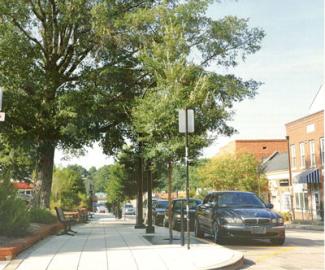Urban Forest Management for Communities

Having a healthy and valuable urban forest requires more than planting trees. Planning for and around your urban forest takes time and effort. It takes input and commitment from multiple municipal departments; including trees at the planning stage; and budgeting for maintenance, removal, planting and staff.
Know what you have
Tree Inventories provide information on where trees are, their species and condition, as well as where plantable sites exist, so you can plan and budget for necessary actions for a healthy and sound urban forest. This information allows a community to manage their trees, plan and prioritize planting and maintenance, and justify budgets.
Please see the files below for information on how to conduct public tree inventories. The Public Tree Inventory Presentation provides a basic overview of tree inventories. The Public Tree Inventory Guide provides detailed information on how and why to conduct tree inventories.
Urban Tree Canopy Assessments typically use aerial or satellite imagery to determine the amount of tree cover, potential tree planting locations, and other cover types. While they don’t provide tree-specific data for management, canopy assessments can help set canopy cover goals and can be tracked over time to track success.
Related Resources
- Urban Tree Management
- Urban Forestry Toolkit
- A Guide to Assessing Urban Forests
- Creating a Tree Ordinance
- Developing a Street and Park Tree Management Plan
- Rhode Island Tree Equity Funding, Financing, and Policy Guide
Plan and Manage
Tree Ordinances define how to manage and care for public and/or privately-owned trees and demonstrate commitment to, and responsibilities for, the community forest.
*NEW* for 2022: RI Guide to Street Tree Ordinances
Management plans establish the vision and goals for the future of a tree canopy. A plan is based on the knowledge of the existing forest and can incorporate annual work plans and budgets, implementation schedules, policy and procedure manuals, standards and specifications, public education and monitoring plans, and plan and ordinance revision schedule. Even Homeowner’s Associations should have a plan on how to manage their trees.
Emergency planning guides a community through response and recovery after a storm-related event by preparing actions, roles and responsibilities in advance.
Managing Elderly Trees The contribution of elderly trees to the landscape often elicits an emotional response. But as they age, the cost of maintenance and the potential for breakage or failure can increase. Maintaining elderly trees is possible but requires additional planning and budget, to spend funds on trees with the best return of time and stability.
